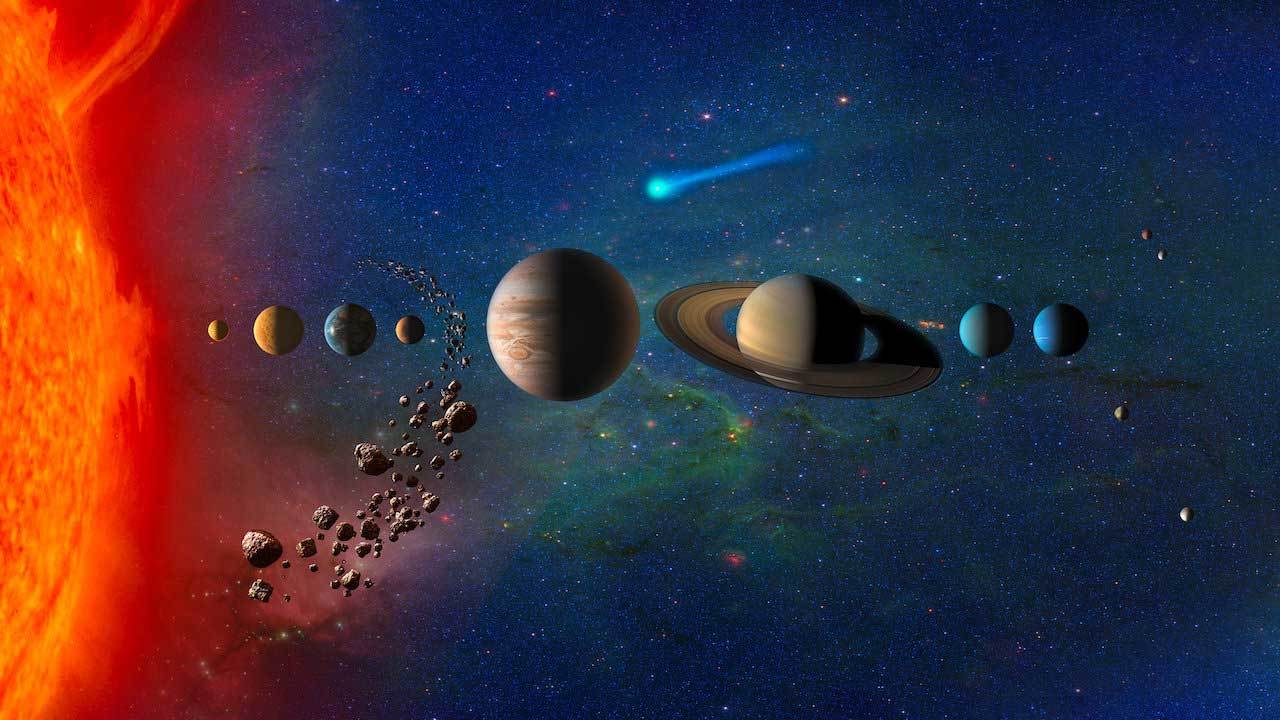Before we found the first exoplanets — planets orbiting other stars — it seemed reasonable to suppose that other planetary systems looked like ours: small, rocky planets close to a Sun-like star, a big Jupiter and a few other gas giants farther out.
But after a quarter century of discovery revealing thousands of exoplanets in our galaxy, things look very different. In a word, we are “weird” — at least among the planetary systems found so far.
Just how weird is still a matter of debate. And weirdness is relative. We’ve detected “hot Jupiters” in scorching, star-hugging orbits around their stars, where a “year” — one trip around the star — takes only a few days. We’ve found a string of small, rocky worlds, all in Earth’s size-range, in lock-step orbits around a tiny red-dwarf star called TRAPPIST-1. We’ve seen systems with one or more planets that are larger than Earth and smaller than Neptune. The properties of these worlds are a mystery because they’re unlike anything in our solar system — and yet, they’re among the most common types of exoplanets discovered so far.
In all this variety, we’ve seen nothing yet that quite resembles our own setup: a Sun-like star with a retinue of rocky planets close in and more distant gas giants (including a domineering Jupiter).
Planetary patchwork
We’re also notable for what we don’t have. Those planets larger than Earth and smaller than Neptune, for one. Systems like TRAPPIST-1 also have multiple planets in nearby orbits that are similar to each other in size and mass. For us, it’s a bit of a hodge-podge.
“Mercury and Mars are less massive than Venus and Earth,” says Yasuhiro Hasegawa, a NASA Jet Propulsion Laboratory researcher who studies the formation of planets and disks around stars. Why do we start with a small planet, Mercury, then have a relatively big Venus and Earth, then a smallish Mars?
And speaking of Mercury, why is our innermost planet so far from the Sun? You could fit the entire TRAPPIST-1 system of seven planets well within Mercury’s orbit. Many other systems detected so far also have planets in orbits far closer to their stars.
“Why is there no planet within Mercury’s orbit?” Hasegawa asks.
Nothing closer to the Sun than Mercury, a small Mars just beyond a bigger Venus and Earth, a really big Jupiter in a distant orbit. “That kind of configuration currently seems very rare,” Hasegawa says.
Jupiter's mood swings
Some of our strangeness, of course, is likely an artifact of our limited technology. Detecting systems like ours, with planets in years-long orbits around middle-weight, yellow stars, is far more difficult with present methods than finding planets in short orbits around small red dwarfs. Such planets are easier to detect by the “transit” method, when a telescope measures a tiny dip in starlight as a planet crosses the face of its star; planets in longer orbits require far more observation time to find them.
Yet despite these limitations, large “survey” efforts have revealed a few broader truths. Jupiters, for instance, seem to be in short supply. And that could turn out to be important.
Some simulations of solar system formation suggest that Jupiter had an outsized influence on the development of the inner planets, for better and for worse. Early in our history, its gravity might have flung ice-bearing comets in our direction, helping fill future oceans. Later, the same tendency of Jupiter to throw its weight around might have helped hurl destructive monsters our way — for instance, the miles-wide rocky chunk that did in the dinosaurs.
System requirements?
How planetary arrangements affect the chance of life arising in other systems also is unknown. We might be tempted to assume that a long list of conditions that mirror our own system is necessary for life. But we don’t have any evidence, really, to support such assertions.
“It’s a rabbit hole if you start requiring Jupiter, say, for Earth to be habitable,” said Jessie Christiansen, a research scientist at NASA’s Exoplanet Science Institute. “Then you have to start saying, ‘Does Earth need a Moon? The Moon is doing a lot to Earth. Does it play an important role?’ Very rapidly, you end up saying the only way it could happen is this incredible set of circumstances all lined up at the same time.”
A few conditions do seem either hard to avoid or potential deal-breakers. For example, liquid water certainly seems essential for life as we know it. And actively flaring stars could doom otherwise temperate planets that orbit too close.
Scientists also produce thought-provoking computer models of possible life-bearing worlds in very different contexts from our own. These could help point the way to life signs we otherwise might have missed.
In the meantime, we can revel in our own oddness: a somewhat strange solar system parked in the suburbs of the Milky Way galaxy. Yes, we are the weird ones.









